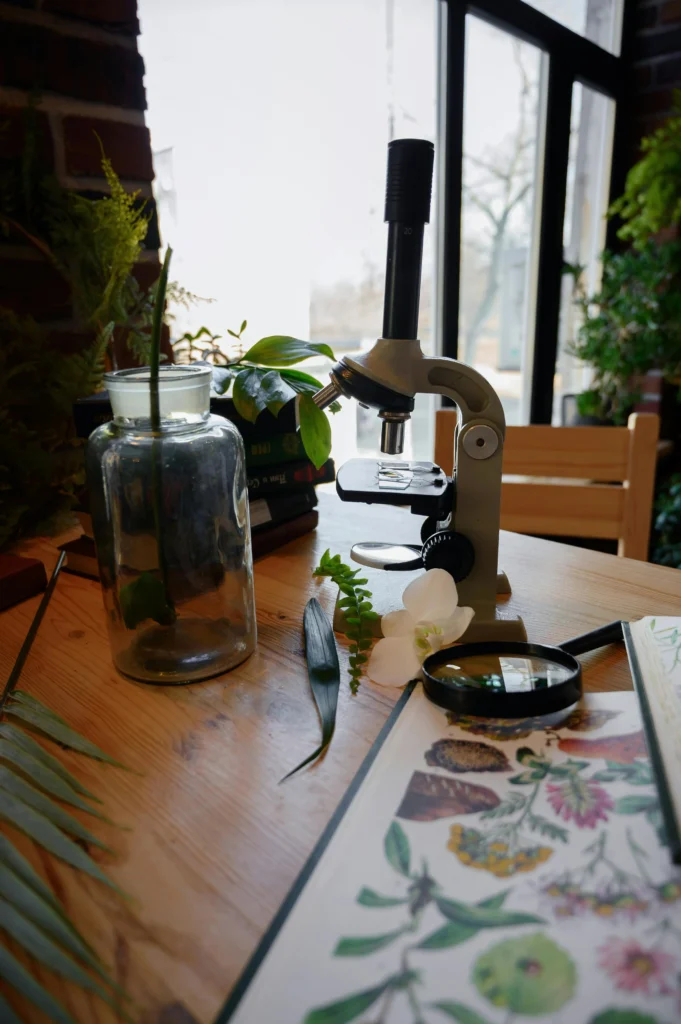Table of Contents
Introduction
Did you know that the Eucalyptus tree, with its towering height and unique characteristics, offers a wide range of health benefits? From its size and habit to its bark, leaves, flowers, and fruits, this remarkable tree has captured the attention of nature enthusiasts and wellness seekers alike.
Join us as we explore the diverse aspects of the Eucalyptus tree, from its taxonomy and history to its cultivation and uses. Discover how this mighty tree not only enhances the beauty of our environment but also promotes our overall well-being.
Key Takeaways:
- Learn about the impressive size and habit of the Eucalyptus tree, with some species reaching heights of over 300 feet.
- Explore the role of bark in the appearance and health of Eucalyptus trees, and understand the importance of pruning for maintenance.
- Discover the unique properties of Eucalyptus leaves, including their essential oils and therapeutic applications.
- Uncover the beauty and culinary uses of Eucalyptus flowers and the significance of their woody capsules.
- Understand the taxonomy and history of Eucalyptus trees, as well as their distribution across the globe.
Size and Habit. Eucalyptus Tree

The Eucalyptus tree is renowned for its impressive size and unique habit. Depending on the species, these trees can reach staggering heights of over 300 feet, making them some of the tallest trees in the world. The towering stature of Eucalyptus trees creates a sense of awe and wonder, showcasing the magnificent beauty of nature.
Alongside their remarkable height, Eucalyptus trees are characterized by their distinct habit. They feature a straight, sturdy trunk that supports their expansive canopy. The spreading branches of Eucalyptus trees create an open and graceful form, allowing light to filter through and providing an inviting space for wildlife to seek shelter.
“The Eucalyptus tree’s size and habit are truly awe-inspiring, making it a captivating addition to any landscape.” – Horticulture expert
Whether standing tall in a grove or commanding attention as a solitary specimen, the size and habit of Eucalyptus trees add a sense of grandeur and elegance to any environment. Their towering presence and graceful form make them a beloved choice among landscapists and nature enthusiasts alike.
Bark
The bark of the Eucalyptus tree is not only aesthetically pleasing but also plays a vital role in the overall health and well-being of the tree. It varies in color, texture, and pattern, depending on the species. Some Eucalyptus trees have smooth and silvery bark, while others showcase rough and deeply furrowed bark, adding visual interest to their trunks.
Pruning is an essential practice in maintaining the health and aesthetics of Eucalyptus trees. Regular pruning helps to promote proper growth and development, ensuring that the tree remains in good condition. It allows for the removal of dead or diseased branches, encourages air circulation, and prevents overcrowding, reducing the risk of pest infestation.
“Pruning is an essential practice in maintaining the health and aesthetics of Eucalyptus trees.”
Bark Characteristics by Eucalyptus Species
Here are some noteworthy characteristics of the bark of select Eucalyptus tree species:
| Eucalyptus Species | Bark Description |
|---|---|
| Eucalyptus globulus | Smooth, mottled bark with patches of gray, cream, and pale pink. |
| Eucalyptus camaldulensis | Reddish-brown, rough bark that flakes in curling strips. |
| Eucalyptus grandis | Smooth, pinkish or pale brown, shedding in long ribbons. |
| Eucalyptus deglupta | Multi-colored bark with streaks of green, orange, purple, and maroon. |
Leaves
The leaves of the Eucalyptus tree are not only visually appealing but also possess unique properties that contribute to its health benefits. These leaves are lanceolate in shape, glossy, and aromatic. They contain essential oils, particularly in species like Eucalyptus globulus, which are known for their therapeutic properties. Eucalyptus leaves are often used to extract essential oils that have various applications, including in aromatherapy and natural remedies.
Flowers and Fruits

Eucalyptus trees are not only renowned for their majestic form and essential oils, but also for their captivating flowers and unique fruits. These exquisite flowers, ranging in hues from delicate white to vibrant shades of pink and red, attract a myriad of pollinators including bees and birds. Their vibrant colors and sweet scents make them a delightful addition to any garden or landscape.
Surrounding the flowers are extraordinary woody capsules called gumnuts. These gumnuts, which come in various shapes and sizes, contain small seeds that are dispersed through the wind or carried by animals to facilitate their propagation. This intricate seed dispersal mechanism ensures the widespread distribution of Eucalyptus trees, allowing them to thrive in different environments.
In certain cultures, the flowers and gumnuts of specific Eucalyptus tree species have culinary or medicinal uses. For instance, the blossoms of Eucalyptus camaldulensis, commonly known as the river red gum, are utilized in the preparation of herbal teas and infusions. Similarly, the gumnuts of Eucalyptus globulus, often referred to as the Tasmanian blue gum, are employed in traditional medicine for their therapeutic properties.
Flowers and Fruits in Culinary and Medicinal Applications:
“The flowers of Eucalyptus trees add a touch of beauty and flavor to many dishes. Petals can be sprinkled over salads, infused into syrups and vinegars, or used as a garnish. The gumnuts, on the other hand, can be crushed and added to stews, soups, and herbal remedies for their distinct aroma and taste.”
| Eucalyptus Species | Culinary Uses | Medicinal Uses |
|---|---|---|
| Eucalyptus camaldulensis | Herbal teas, infusions | Respiratory ailments, inflammation |
| Eucalyptus globulus | Flavoring, baking, confectionery | Coughs, congestion, sore throat |
| Eucalyptus citriodora | Citrus-scented desserts, beverages | Insect repellent, muscle pain relief |
Taxonomy

The Eucalyptus tree belongs to the Myrtaceae family, which also includes notable genera such as Callistemon and Melaleuca. Within the Eucalyptus genus, there are numerous species and hybrids, each with its own distinct characteristics and uses. Let’s take a closer look at some of the most fascinating members of the Eucalyptus family:
Eucalyptus globulus
Commonly known as the Blue Gum, Eucalyptus globulus is one of the most widely recognized species. It is renowned for its striking blue-green leaves and strong, aromatic essential oil. This species is native to Australia and has been introduced to many other countries for its medicinal properties and commercial value.
Eucalyptus grandis
Also known as the Flooded Gum, Eucalyptus grandis is a tall tree that can reach heights of up to 200 feet. It is characterized by its smooth bark, lanceolate leaves, and showy cream-colored flowers. Eucalyptus grandis is often cultivated for its high-quality timber, which is used in construction and furniture-making.
Eucalyptus regnans
Eucalyptus regnans, commonly referred to as the Mountain Ash or Victorian Ash, is one of the tallest flowering plants in the world. Native to Australia, this species can grow to impressive heights, reaching over 330 feet. It is prized for its straight trunk, smooth bark, and versatile timber, which is employed in various industries.
In addition to these species, there are numerous other Eucalyptus tree varieties, each with its own unique characteristics and contributions. The taxonomy of Eucalyptus trees showcases the incredible diversity and adaptability of this remarkable genus.
| Species | Common Name | Distinct Characteristics | Main Uses |
|---|---|---|---|
| Eucalyptus globulus | Blue Gum | Blue-green leaves, aromatic essential oil | Medicinal applications, essential oil extraction |
| Eucalyptus grandis | Flooded Gum | Smooth bark, lanceolate leaves, cream-colored flowers | Timber for construction and furniture-making |
| Eucalyptus regnans | Mountain Ash | Tall, straight trunk, smooth bark | Versatile timber for various industries |
History
The Eucalyptus tree has a rich history that spans centuries and encompasses diverse cultures and regions. Native to Australia, these majestic trees have been introduced to various parts of the world for their valuable timber, medicinal properties, and aesthetic appeal. The remarkable adaptability and resilience of Eucalyptus trees have contributed to their widespread cultivation and popularity in many countries.
Since their introduction, Eucalyptus trees have flourished in different climates and landscapes, establishing themselves as iconic features in parks, gardens, and natural areas. The captivating beauty of their unique foliage, bark, and flowers has made them sought after by horticulturists and nature enthusiasts alike.
“The introduction of Eucalyptus trees to new environments has had a profound impact on the local ecosystems, providing habitat for wildlife, stabilizing soil, and enhancing biodiversity.” – Dr. Botanist
Furthermore, the cultural significance of Eucalyptus trees cannot be overlooked. Many indigenous Australian communities have a deep spiritual and practical connection with these trees, using them for ceremonial purposes, traditional medicines, and tools.
Today, Eucalyptus trees continue to be valued for their numerous benefits, including their ability to provide shade, sequester carbon dioxide, and release aromatic oils that can promote relaxation and respiratory health. Whether it’s in urban landscapes, commercial plantations, or natural forests, the history of the Eucalyptus tree serves as a testament to its enduring value and impact on our world.
Species and Hybrids

The Eucalyptus genus encompasses a vast number of species and hybrids, each with its own unique characteristics. Understanding the different types of eucalyptus trees allows for informed decisions when selecting trees for specific purposes or environments.
Eucalyptus globulus
Eucalyptus globulus, commonly known as the Blue Gum Eucalyptus, is recognized for its distinctive blue-green leaves and strong, aromatic essential oil. This species is widely cultivated for its medicinal and therapeutic properties, as well as its timber and ornamental value.
Eucalyptus regnans
Eucalyptus regnans, also known as the Mountain Ash or Giant Ash, is one of the tallest flowering plants in the world. This impressive species is native to Australia and is highly valued for its timber, which is used in construction and furniture-making.
Other Species and Hybrids
There are many other species and hybrids of eucalyptus trees, each with its own unique characteristics. Some are prized for their beautiful flowers, while others are preferred for their fast growth or specific adaptations. Here are a few notable examples:
- Eucalyptus citriodora: Known for its lemon-scented foliage, this species is commonly used in landscaping and as a natural insect repellent.
- Eucalyptus camaldulensis: Also known as the River Red Gum, this species is native to Australia and is highly adaptable to various climates and soil conditions.
- Eucalyptus deglupta: This species, often called the Rainbow Eucalyptus, is known for its stunning multicolored bark that peels away to reveal vibrant hues.
These are just a few examples of the diverse range of eucalyptus species and hybrids available. Whether you’re looking for a specific characteristic or simply appreciate the beauty of these trees, there is a eucalyptus variety suitable for every unique preference and purpose.
Related Genera

In addition to the Eucalyptus genus, several related genera within the Myrtaceae family share similarities with Eucalyptus trees. Exploring these related genera provides a broader understanding of the botanical relationships and diversity within the Myrtaceae family. Two notable genera that share comparable characteristics with Eucalyptus trees are Callistemon and Melaleuca.
Callistemon, commonly known as bottlebrushes, is a genus of evergreen shrubs or small trees native to Australia. Like Eucalyptus trees, they belong to the Myrtaceae family and have similar floral structures. The name “bottlebrushes” comes from their flower spikes, which resemble the shape of a bottle brush. These flowers attract birds and bees, making them a popular choice for ornamental gardens.
Melaleuca, commonly known as paperbarks, is another genus within the Myrtaceae family that shares characteristics with Eucalyptus trees. These trees are known for their distinct papery bark, which peels away in layers. Like Eucalyptus trees, many species of Melaleuca also produce essential oils with various applications. The paperbark oil has antiseptic properties and is used in aromatherapy and natural remedies.
Comparing Eucalyptus, Callistemon, and Melaleuca
| Eucalyptus | Callistemon | Melaleuca |
|---|---|---|
| Belongs to the Eucalyptus genus | Belongs to the Callistemon genus | Belongs to the Melaleuca genus |
| Known for its towering size and habit | Generally smaller, shrub-like or small tree | Varies in size from shrubs to small trees |
| Smooth or tessellated bark that sheds in strips | Flowers in distinct bottlebrush shape | Papery bark that peels away in layers |
| Leaves contain essential oils used for extraction | Attracts birds and bees with its showy flowers | Produces essential oils with antiseptic properties |
Distribution
Eucalyptus trees are widely distributed around the world, with a significant presence in various regions. Originally native to Australia, these trees have been introduced to many countries for their valuable timber, pulpwood, and other economic purposes. Eucalyptus plantations can be found in North America, specifically in California, as well as in parts of South America and Europe. Their cultivation as a plantation species highlights their commercial value and demonstrates their adaptability to different environments.
Eucalyptus trees have successfully established themselves in various regions, thanks to their resilience and ability to thrive in different climatic conditions. Their distribution allows for a comprehensive understanding of their global significance and impact.
North America (California)
In North America, specifically in California, Eucalyptus trees have found a favorable environment for growth. These trees were introduced to California in the mid-19th century, primarily for their ornamental value. However, they quickly gained popularity for their fast growth rate and multipurpose uses, including timber production, papermaking, and erosion control.
The Mediterranean climate of California, characterized by mild, wet winters and warm, dry summers, closely resembles the native habitat of some Eucalyptus species. This similarity in climate allows Eucalyptus trees to thrive and establish themselves as a prominent feature of the Californian landscape.
Eucalyptus trees in California have faced controversy due to their impact on local ecosystems and the risk of wildfires. While they provide benefits such as windbreaks and shade, their dense foliage can contribute to increased fire hazards. Managing Eucalyptus groves and implementing proper fire prevention strategies are crucial for maintaining a balanced coexistence with these trees.
South America
South America is another region where Eucalyptus trees have become widely distributed. Brazil, in particular, stands out as a significant producer and exporter of Eucalyptus timber. The Brazilian Eucalyptus plantation industry is well-developed and contributes significantly to the country’s economy.
Eucalyptus plantations in South America are valued for their rapid growth, high wood density, and adaptability to different soil and climate conditions. These plantations have played a crucial role in meeting the demand for timber and fiber products in the region, reducing pressure on native forests.
Europe
In Europe, Eucalyptus trees are cultivated primarily in Mediterranean regions such as Spain and Portugal. The warm and dry summers, along with mild winters, create favorable conditions for the growth and development of Eucalyptus plantations.
Eucalyptus plantations in Europe serve various purposes, including timber production, biomass production for energy, and green space enhancement. These plantations contribute to sustainable forest management practices and help diversify the region’s forestry sector.
| Region | Main Use |
|---|---|
| North America (California) | Timber, papermaking, erosion control |
| South America (Brazil) | Timber production, pulpwood |
| Europe (Spain, Portugal) | Timber production, biomass production, green space enhancement |
Cultivation and Uses
Eucalyptus trees are highly valued for their versatile uses and are cultivated for various purposes.
Timber for Construction and Furniture-making
The eucalyptus tree produces timber that is known for its durability and resistance to termites. This makes it a popular choice in construction and furniture-making industries. The timber is used to build structures, including houses, bridges, and outdoor decking. Additionally, it is crafted into high-quality furniture that is both aesthetically pleasing and long-lasting.
Pulpwood for Paper and Packaging
Eucalyptus trees play a vital role in the production of pulpwood, which is essential for the paper and packaging industries. The wood fibers extracted from the tree’s trunk and branches are processed to create pulp, which is then used to manufacture various paper products, including printing paper, tissue paper, and cardboard packaging.
Eucalyptus Oil for Medicinal, Cosmetic, and Aromatic Applications
The leaves of certain eucalyptus tree species contain valuable essential oils that are extracted through a distillation process. Eucalyptus oil has numerous applications in the fields of medicine, cosmetics, and aromatherapy. It is known for its soothing properties and is commonly used in treatments for respiratory ailments, such as coughs and congestion. The oil is also utilized in skincare products, including creams, lotions, and shampoos, due to its antibacterial and antifungal properties. Furthermore, eucalyptus oil is highly valued for its pleasant and refreshing fragrance, making it a popular ingredient in perfumes, candles, and air fresheners.
Musical Instruments and Natural Dyes
Eucalyptus trees have been utilized in the production of musical instruments, most notably the traditional Australian instrument known as the didgeridoo. The hollowed-out trunks of certain eucalyptus tree species provide the necessary resonance and unique sound characteristics for this wind instrument.
“The eucalyptus tree’s versatility extends beyond its timber and essential oils. It has also been used as a source of natural dyes. The bark, leaves, and gumnuts of specific eucalyptus species contain pigments that can be extracted and used to dye fabrics, yarns, and other materials.”
These various uses highlight the immense value and practicality of cultivating eucalyptus trees. Whether it’s for construction, paper production, therapeutic oils, musical instruments, or natural dyes, the eucalyptus tree offers numerous opportunities for sustainable industries and everyday applications.
| Use | Description |
|---|---|
| Timber | Durable, termite-resistant wood used in construction and furniture-making. |
| Pulpwood | Extracted fibers used in the production of paper and packaging materials. |
| Eucalyptus Oil | Extracted from leaves and used for medicinal, cosmetic, and aromatic purposes. |
| Musical Instruments | Utilized in the production of instruments like the didgeridoo. |
| Natural Dyes | Pigments from bark, leaves, and gumnuts used for dyeing fabrics and materials. |
Conclusion
The Eucalyptus Tree, with its majestic presence and numerous benefits, is truly a gift of nature. From its towering size and unique bark to its aromatic leaves, showy flowers, and valuable timber, this remarkable tree holds a special place in our lives. Its health benefits, including its essential oil, have been recognized and utilized for centuries, contributing to our well-being and overall wellness.
With its versatile applications, the Eucalyptus Tree has found its way into various industries. Its timber, known for its durability and resistance to pests, is highly valued in construction and furniture-making. The extraction of eucalyptus oil from its leaves has led to its use in medicinal, cosmetic, and aromatic products, providing relief and soothing properties. Moreover, the cultivation of Eucalyptus plantations has paved the way for sustainable economic growth, fulfilling industry demand for paper, pulpwood, and other commercial purposes.
Beyond its practical uses, the Eucalyptus Tree is a source of inspiration and appreciation. Its beauty, from the graceful canopy to the vibrant flowers and gumnuts, continues to captivate our senses and elevate our surroundings. Whether in urban landscapes, botanical gardens, or natural habitats, the Eucalyptus Tree leaves an indelible mark on our environment, offering shade, shelter, and a sense of serenity.
FAQs
What are the main health benefits of eucalyptus trees?
Eucalyptus trees offer a myriad of health benefits, primarily due to their essential oils. These benefits include respiratory relief, antimicrobial properties, pain relief, and more.
How does eucalyptus contribute to respiratory health?
Eucalyptus essential oil contains compounds like cineole, which can help alleviate respiratory issues such as congestion, coughs, and cold symptoms. Inhaling eucalyptus vapors can open up the airways and promote easier breathing.
Can eucalyptus help with pain relief?
Yes, eucalyptus oil has analgesic properties that can help reduce pain and inflammation. It’s often used in topical treatments like creams and ointments to alleviate sore muscles, joint pain, and headaches.
Does eucalyptus have antimicrobial properties?
Indeed, eucalyptus oil possesses antimicrobial and antiseptic qualities, making it effective against various bacteria, viruses, and fungi. It’s commonly used in natural cleaning products and as an ingredient in mouthwashes and gargles.
How does eucalyptus promote relaxation and stress relief?
The aroma of eucalyptus is known to have calming effects on the mind and body, helping to reduce stress and promote relaxation. Diffusing eucalyptus oil or adding it to a bath can create a soothing atmosphere.
Can eucalyptus support immune function?
Yes, eucalyptus oil contains compounds that may help boost the immune system, making it more effective at fighting off infections and illnesses. Regular use of eucalyptus products may help support overall immune function.
Are there any precautions to consider when using eucalyptus products?
While eucalyptus oil is generally safe for most people when used appropriately, it can be toxic if ingested in large amounts. It’s essential to dilute eucalyptus oil properly before applying it to the skin and to keep it out of reach of children. Additionally, individuals with certain medical conditions or sensitivities should consult a healthcare professional before using eucalyptus products.


No Responses